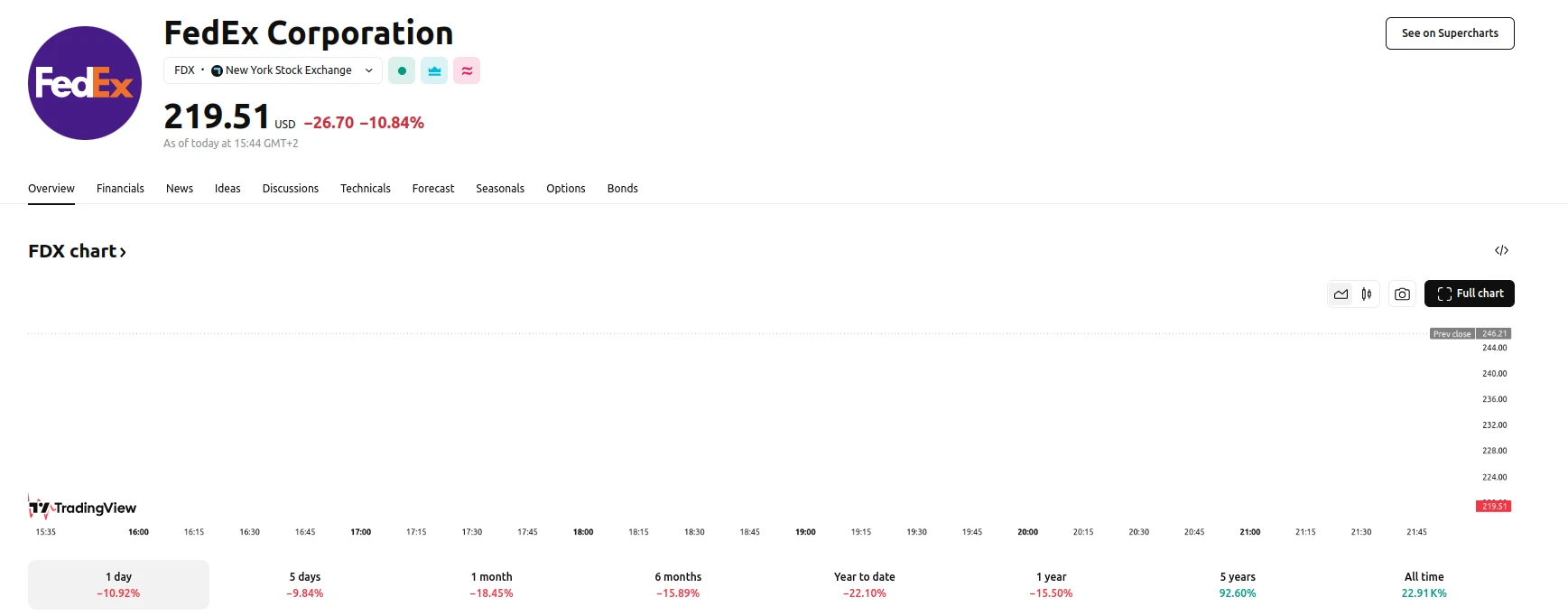Key moments
- FedEx adjusts its fiscal year outlook, projecting revenue to be slightly down from the previous year and adjusted per-share earnings between $18 and $18.60.
- The company reports a fiscal third-quarter profit of $910 million, with revenue reaching $22.2 billion, though adjusted earnings per share of $4.51 fell short of analyst estimates.
- FedEx proceeds with the spin-off of its freight trucking division, amidst decreased operating results within that segment, including reduced fuel surcharges and shipment volumes.
FedEx Revises Financial Projections Amidst Industrial Slowdown and Freight Division Spin-Off
FedEx has revised its financial forecast, citing a decline in business-to-business shipment demand due to ongoing challenges in the U.S. industrial economy. The company now anticipates revenue to be slightly lower than the previous year, a shift from its earlier projection of flat year-over-year sales. Furthermore, the adjusted per-share earnings outlook has been lowered to a range of $18 to $18.60, down from the initial $19 to $20. This adjustment reflects the company’s response to the current economic climate. As of March 21, 2025,FedEx shares are down 10.92% for the day, -18.45% for the month, and -15.89% for the last six months.

Despite these revised projections, FedEx reported a fiscal third-quarter profit of $910 million, with revenue reaching $22.2 billion, compared to $21.7 billion in the same quarter of the previous year. However, the company’s adjusted earnings per share of $4.51 fell short of the $4.56 expected by analysts. The freight trucking division experienced a decrease in operating results, influenced by factors such as reduced fuel surcharges, decreased weight per shipment, and fewer shipments. This divisional decline occurred even as the express segment saw improvements due to cost-saving measures and increased volumes.
FedEx is continuing with its plan to spin off its freight trucking division, a strategic move aimed at streamlining operations and enhancing shareholder value. This decision comes as the company navigates a period of weakened demand in both its freight and U.S. parcel businesses. The focus remains on adapting to the current economic landscape and maximizing efficiency across its various segments.





